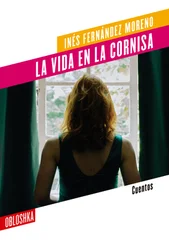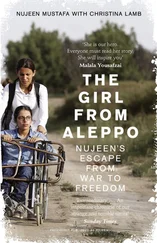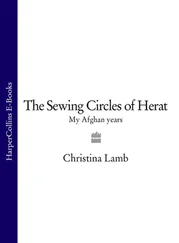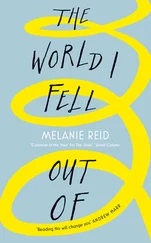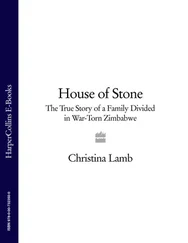Everything had happened so quickly it was hard to take in. On 11 September 2001 I had just moved to Portugal with my husband and two-year-old son when my sister-in-law called telling me to switch on the news. We hadn’t yet got a television so we headed to a local piri-piri chicken café which had a large screen to show football matches to English tourists. Watching the planes fly through the brilliant blue sky of a Manhattan morning and smash into the iconic towers of the World Trade Center was impossible to comprehend, no matter how many times we watched.
Then we heard two other passenger planes had crashed – one into the Pentagon and one into a field in Pennsylvania. I held my son tight, for it was clear that nothing would be the same again.
It wasn’t long before the TV commentators were joining the dots to Saudi billionaire’s son Osama bin Laden, who had vowed war on the United States. Soon they were focusing their pointers on maps of Afghanistan where the al Qaeda leader had fought in the 1980s and been living under the protection of the Taliban since 1996.
Who were the Taliban, and their mysterious one-eyed leader Mullah Omar? It was a regime about which the West knew so little that when 9/11 happened, Jonathan Powell, Chief of Staff to British Prime Minister Tony Blair, sent out his staff to buy all the books they could on the Taliban.3 They had only been able to find one – Ahmed Rashid’s Taliban , which had struggled to find a publisher. Now it was a best-seller and everyone had heard of the zealots who wanted to lock away Afghanistan’s women and take the country back to the seventh century.
Editors who had not been in the least interested in goings on in Afghanistan suddenly could not get enough stories of the horrors of life under the Taliban. For weeks we had been writing about the women lashed for wearing nail varnish or white shoes; the men beaten with logs for not having beards as long as two fists; the sports stadiums used for amputations and executions; and the banning of everything from chess to music.
Now, just two months later, they had been driven out. In Kabul, everyone seemed to be out on the streets, hearing each other’s stories, like people inspecting the damage after a massive storm. The reports we were sending were upbeat tales of life beginning again: girls’ schools reopening, women casting off the blue burqas they had been made to wear. On every street there were people hammering Coke and 7 Up cans into satellite dishes. In a teahouse I came across the first meeting of a long-banned chess club; in the bookshop around the corner from the hotel was Shah Mohammad Rais, who had hidden his books to prevent the Taliban burning them. In the National Gallery I found a man with a sponge and bucket washing off the trees and lakes he had painted over faces on artworks so the Taliban would not destroy them.
Most magical of all were the kites flying from the rooftops. On the road up to the Intercontinental Hotel (that wasn’t really an Intercontinental) a parade of tiny kite shops had reopened. Inside each sat a man wrapping bamboo frames with tissue paper then pasting on shapes in bright pinks, yellows and blues like a Matisse collage and finally rolling the string onto giant reels. Each man claimed to be the most famous kite-maker in Kabul. We didn’t know then that the string would be coated with ground glass, and the objective was to cut down kites of other boys (even then, we never saw girls flying kites).
The story I had written that day was of an encounter with British Royal Marines on Chicken Street, a favourite destination back in the days of the hippie trail, with all its little shops selling carpets, shawls, and lapis and garnet stones set into silver rings that would soon blacken. The soldiers were the first arrivals of the International Stabilisation Assistance Force (ISAF), which was quickly nicknamed the International Shopping Assistance Force.
The first foreign troops to enter Kabul since the Russian occupation twelve years earlier, the British were warmly welcomed by locals. After years of civil war, many Afghans saw foreigners as the only way to end the fighting so they could get on with life. The fact that of all people they were British, back for more, seemed to endear them further to the locals. The British soldiers sat on top of their armoured personnel carriers handing out sweets to Afghan children and cigarettes to the men, and all round it was smiles.
‘Hello my sister, what gives?’ Wais Faizi, the hotel’s manager, was a thirty-one-year-old Afghan with a fast-talking New Jersey patois like the car salesman he had once been. ‘The Fonz of Kabul’, we called him. His family had owned the Mustafa for years, until it was seized by communists around the time of the Soviet invasion in 1979, and they had fled to America when he was just a child. They had recently returned to Afghanistan, and had been in the process of converting the Mustafa into a gemstone and money exchange when 9/11 happened and Kabul unexpectedly became the focus of world attention. So they quickly turned it back into a hotel, just in time for the flood of journalists, though with not enough time to actually make the rooms comfortable.
‘ Chai sabz ?’ Wais handed me a mug of green tea.
‘ Tashakor .’ I thanked him. It had about as much taste as old dishwater, but it was warm, tendrils of steam rising in the frigid air, and I cupped my hands gratefully around the sides.
‘Still working on the espresso machine,’ he apologised. He found his home country harder to get used to than we nomad journalists did, and often talked wistfully of Dunkin’ Donuts and Domino’s Pizza. A coffee machine would actually be useless, given how rarely we had electricity; and when it came it was in gadget-destroying bursts. But if anyone could get one, it would be Wais. He’d already turned one of the rooms into a makeshift gym, complete with some dumbbells bought from a warlord, and decorated with posters of his hero Al Pacino.
Wais had even managed to get hold of the only convertible in Kabul, a 1968 Chevy Camaro which had belonged to one of the Afghan princes before the King was deposed, and had taken me for a spin. We’d had a glorious afternoon driving around the ruins of Kabul, children waving in astonishment, carpet-beaters jumping out of the way and men wobbling on their bikes at the sight of a foreign woman in an open-top car and headscarf fancying herself as Grace Kelly.
Next he had promised us a bar, and he was organising a Christmas dinner, for, unbelievably, he had found someone in the Panjshir valley who raised turkeys. It would make a change from the past-their-date tuna ready-meals, peanut butter and white-furred bars of Cadbury’s chocolate we had been living on from Chelsey (sic) Supermarket, where Osama bin Laden’s Arabs used to shop.
I caught another snowflake on the tip of my tongue. ‘Christina jan , don’t eat the snow – it’s full of shit!’ admonished Wais. He meant it literally. Everyone in Kabul seemed to have a permanent cough, and Americans I met loved to tell me the air was full of faecal matter – waste went straight into the streets, and the smoke rising from the houses on the hills was from pats of animal dung that people burned as fuel.
‘No thanks to your horrid pigeons!’ I replied. Wais had recently discovered Kabul’s old Bird Market, which sold anything from tiny orange-beaked finches to strutting roosters, all meant for fighting. There, he had acquired a flock of burbling pigeons which he kept in a glass coop in the open courtyard in the centre of the hotel. Pigeon-flying was popular in Kabul, where houses had flat roofs and people trained them to take off as if by remote control then loop the loop by waving a stick called a tor , with a piece of black cloth on the end. As always in Afghanistan, it wasn’t a benign pastime: the real aim was to try to get someone’s rival flock to land on your rooftop. You could usually tell pigeon-trainers by their beak-scarred hands.
Читать дальше





